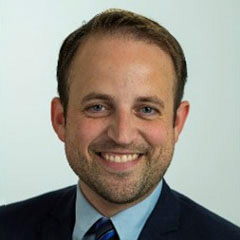Individuals’ health-related social needs (HRSNs), such as lack of housing, transportation, or food, affect their well-being, ability to access health care, and health outcomes. Recognizing the link between HRSNs and health care, insurers are increasingly incentivizing health systems to identify and address HRSNs. For example, in August 2022, the Centers for Medicare & Medicaid Services introduced a hospital inpatient quality measure focused on HRSN screening, and it is proposing payments for providers to help identify and address HRSNs. As health systems adopt these activities, they will need to identify ways to securely and efficiently share HRSN data with clinical and community partners so they can support and improve care.
The Accountable Health Communities Model provided insight into implementing HRSN data-sharing initiatives.
The Accountable Health Communities Model (2017–2023) from the Centers for Medicare & Medicaid Services Innovation Center focused on addressing the HRSNs of Medicare, Medicaid, and dual-eligible patients. Specifically, the model supported universal HRSN screening, referral to community-based organizations (CBOs), and navigation to help eligible patients access services.
Focus groups conducted with 19 Accountable Health Communities Model awardees and their partners (three health care providers, three CBOs, and one health information exchange) to better understand their experiences with data sharing revealed two main challenges:
- Health care providers were uncertain how to find or use HRSN screening results. When HRSN data were available in electronic health records, it enabled providers to see patients’ HRSNs. Departments in the same health system, however, sometimes used different methods for collecting and reporting HRSN data, making it difficult to find and share HRSN screening results, and providers did not always know how to use HRSN data to adjust patient care.
- Limited funding and incentives prevented CBOs from participating in HRSN data-sharing systems. Funding for HRSN screening often flows to health systems. CBOs in the Accountable Health Communities Model received more referrals, sometimes through multiple data-sharing platforms, but they had limited capacity, staff, and resources to handle the influx of clients and operate new data-sharing systems.
Sharing HRSN data can inform strategies that address community-level systemic and structural inequities.
By sharing data that demonstrate disparities in the prevalence of HRSNs across different populations and geographic locations, Accountable Health Communities awardees built support for addressing those inequities. For example, one awardee shared aggregate data on HRSNs with community partners to show that American Indian populations were experiencing higher rates of HRSNs and to increase social services available to American Indian communities. Other awardees used data on areas with the highest rates of food insecurity to inform the location of a mobile food bank.
Organizations can build partnerships to improve HRSN data sharing and advance health equity.
With hospitals and health systems incentivized to screen and address HRSNs—and with data-sharing technology in place—there is great potential to collect and use HRSN data to support patient care and health equity. But there are several ways that organizations can still improve these initiatives, including through partnerships with care teams, CBOs, and patients. For example, organizations implementing HRSN data-sharing initiatives can do the following:
- Support health care providers’ use of HRSN data. This could involve clearly defining providers’ roles and responsibilities related to using HRSN data in care and training providers on how HRSNs can inform clinical guidance. IT staff at health systems can work with vendors to ensure that HRSN results appear in a common format in an electronic health record and to help connect care teams in electronic health record systems. For example, they could enable patient navigators, or others with knowledge of HRSNs, to highlight specific HRSNs that might affect care and share information with clinicians on the services available to address those needs.
- Incentivize CBOs to participate in data-sharing initiatives with health outcomes data, funding, and opportunities for co-creation. CBOs in focus groups expressed interest in securely receiving patient-specific health outcomes data from health systems to help them understand their clients’ physical health and to demonstrate their impact on health outcomes to funders. Working with CBOs to design and govern data-sharing initiatives could further incentivize their participation. Finally, funding CBOs’ efforts to address HRSNs is critical, and federal policies such as Medicaid Managed Care Organization flexibilities, section 1115 Medicaid waivers, and in-lieu-of services could offer opportunities to finance this work.
- Prioritize patient voices in data-sharing initiatives. As focus group participants emphasized, prioritizing patient voices in data-sharing initiatives can help build trust and ensure that these initiatives identify and proactively address patient concerns. Patients can help to structure privacy and security measures, consent processes, and the approaches health systems take to sharing HRSN screening results with patients.
Effectively sharing HRSN data can streamline referrals to community services to address patients’ needs, improve the quality of care and care coordination, and inform our understanding of the prevalence of social issues in communities. Although the technology to facilitate data-sharing exists, implementation has been challenging. Fulfilling the promise of data-sharing to address HRSNs and advance health equity will require organizations to not only use data-sharing technology but also build meaningful relationships that encourage clinicians and care teams, CBOs, and patients to provide input on the design and ongoing implementation of data-sharing initiatives.






